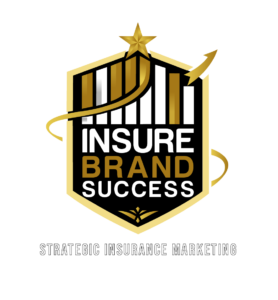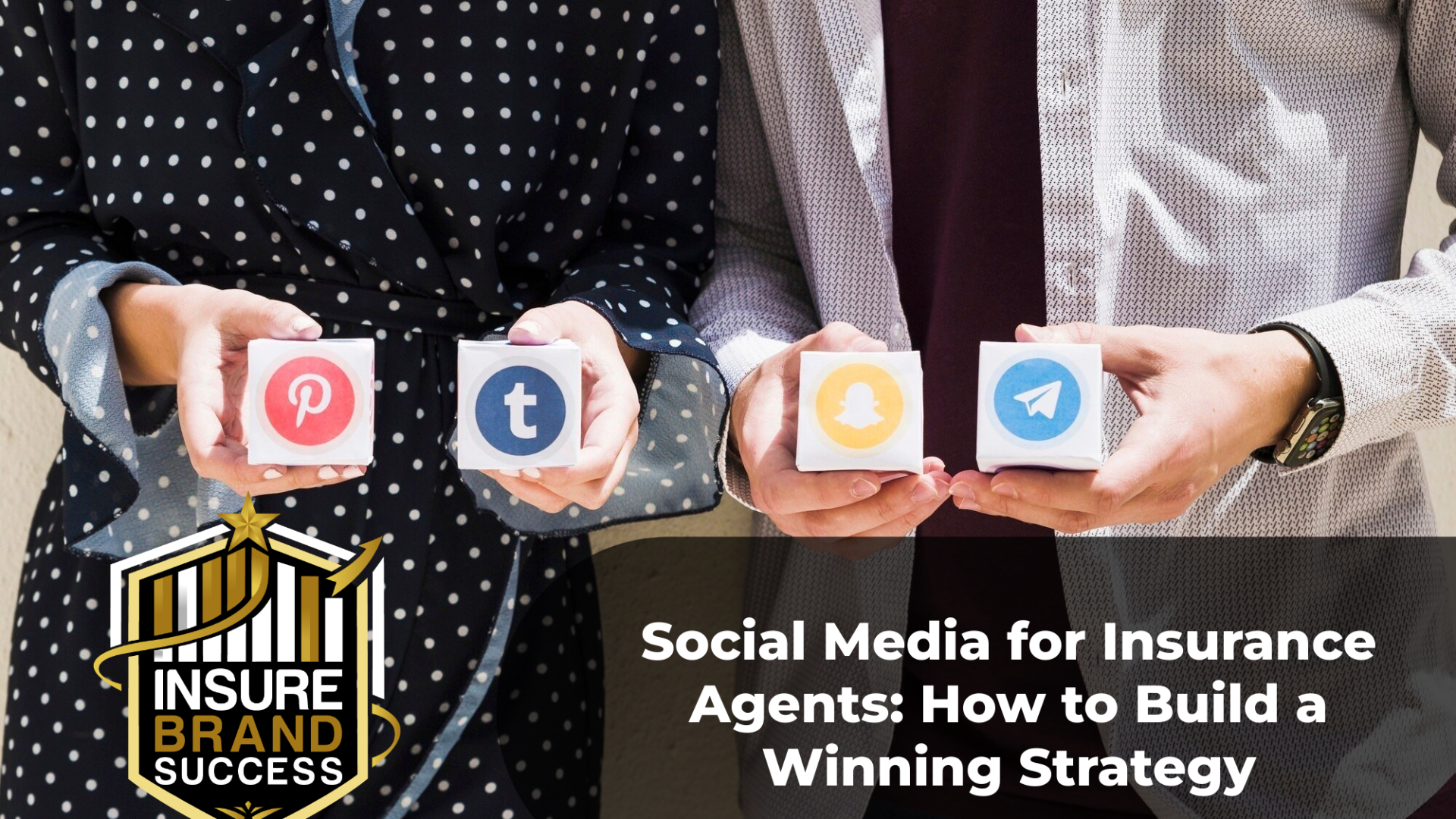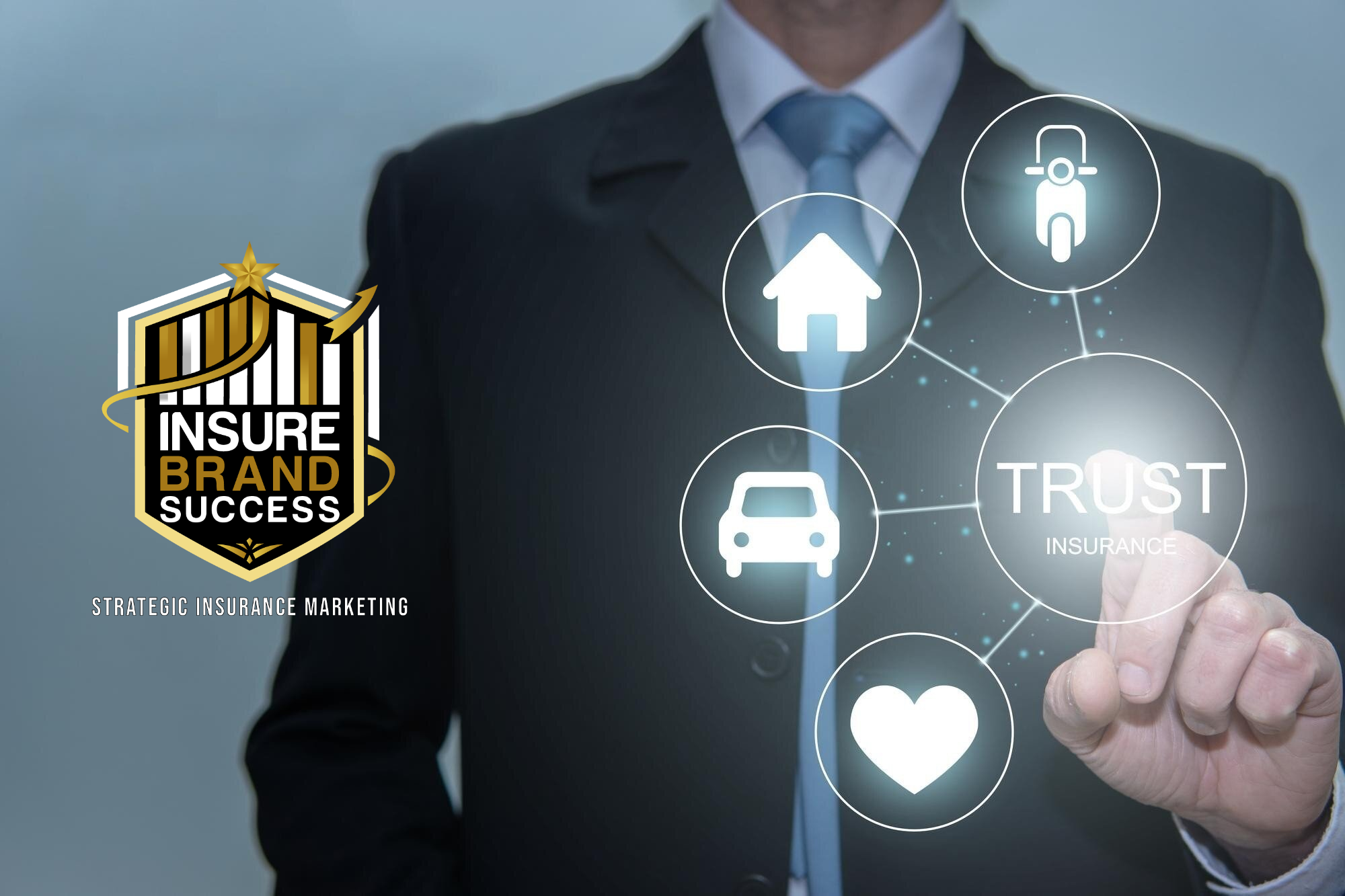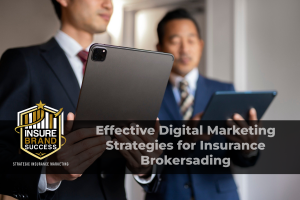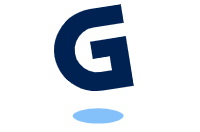Social media has become an indispensable part of any business’s marketing strategy, and the insurance industry is no exception. For insurance agencies looking to stand out in a competitive market, building a strong social media presence is a key tactic to not only attract new clients but also retain them. In this article, we’ll explore how insurance agencies can craft a social media strategy that effectively drives client acquisition and retention while strengthening their online presence.
1. Understanding the Role of Social Media in Insurance Marketing
Insurance marketing strategies have evolved significantly in recent years, with social media playing a pivotal role in engaging clients and prospects. Gone are the days of relying solely on traditional advertising methods—today, consumers are turning to platforms like Facebook, Instagram, LinkedIn, and Twitter to research insurance providers, ask questions, and interact with brands.
By leveraging social media, insurance agencies can increase brand visibility, foster relationships with potential clients, and position themselves as industry experts. Regularly sharing content that educates, informs, and engages will establish your agency’s authority and trustworthiness, which are key factors in acquiring and retaining clients.
2. Define Your Social Media Goals
Before diving into content creation, it’s essential to define your social media goals. Do you want to drive traffic to your website? Increase lead generation? Build brand awareness? Each of these goals requires a different approach, and without clear objectives, your social media efforts may lack direction and purpose.
For example, if your goal is to drive traffic to your website and convert visitors into clients, your social media posts should focus on sharing informative blog articles, client testimonials, and content related to your digital marketing for insurance agencies. Alternatively, if you aim to increase brand awareness, you’ll want to focus more on storytelling, behind-the-scenes content, and thought leadership that positions your agency as a trusted expert in the field.
3. Identify the Right Platforms for Your Audience
Not all social media platforms are created equal, and each caters to different types of content and audiences. The key is to identify where your ideal clients are most active and focus your efforts on those platforms.
- Facebook: Ideal for reaching a broad audience, including a mix of younger and older consumers. It’s a great platform for sharing customer success stories, tips, and articles.
- Instagram: Highly visual, making it perfect for showcasing your agency’s personality, sharing behind-the-scenes content, and promoting visually compelling content like infographics.
- LinkedIn: Best for B2B connections and professional networking, LinkedIn is where many decision-makers go to research services and industry trends. It’s ideal for sharing professional insights, case studies, and establishing thought leadership.
- Twitter: Useful for real-time updates, industry news, and engaging in conversations. It can also be a great tool for networking with influencers in the insurance and financial sectors.
When choosing your platform(s), remember that each channel requires a different approach, and it’s important to tailor your content to suit the audience and format of each platform.
For a more robust digital marketing plan tailored to your agency, consider exploring our Insurance Marketing Strategies.
4. Create Engaging and Shareable Content
The key to social media success is producing valuable content that resonates with your audience. Here are some content ideas that can boost engagement and help you connect with potential clients:
- Educational Posts: Create posts that educate your audience about insurance terms, types of policies, or the claims process. These can be in the form of blog articles, infographics, or short video clips.
- Client Testimonials: Showcase satisfied clients who share their experiences with your agency. Testimonials humanize your brand and build trust with prospective clients.
- Industry Insights: Share updates on industry trends, regulatory changes, or news that could impact your clients. Position yourself as a knowledgeable resource they can rely on.
- Interactive Polls or Quizzes: Social media thrives on engagement. Posting polls or quizzes can spark interaction, and they can also be fun ways to involve your followers.
A variety of content types—ranging from client acquisition posts to retention-oriented content—will ensure your social media pages are dynamic and interesting.
For more on how you can create content tailored to your audience’s needs, check out our Client Acquisition and Retention Programs.
5. Leverage Paid Social Advertising
While organic posts are essential for building a relationship with your audience, paid social media ads can help expand your reach and target specific audiences. Platforms like Facebook and LinkedIn offer advanced targeting options that allow you to reach people based on location, age, interests, and even behaviors.
For example, a paid Facebook campaign could target individuals who recently searched for car insurance or people living in a specific zip code. With the right targeting, you can ensure that your ads are being shown to people who are most likely to be interested in your services, maximizing your ad spend’s effectiveness.
Consider combining your paid social media strategy with your SEO for Insurance Brokers efforts to amplify your online presence across multiple channels.
6. Consistency is Key
One of the biggest mistakes agencies make on social media is inconsistent posting. Social media is a long-term investment, and to see results, you need to be consistent in your efforts. This doesn’t mean you have to post multiple times a day, but you should aim for regular posts that keep your agency visible in your audience’s feed.
Consistency also extends to your brand’s voice and aesthetic. Ensure your posts reflect your agency’s personality and are aligned with the values you want to communicate. Whether you’re posting educational content or a lighthearted story, consistency in tone will help you build a recognizable and trustworthy brand.
7. Monitor and Measure Your Performance
To truly build a winning social media strategy, you must measure its effectiveness. Track key metrics like engagement (likes, comments, shares), reach, click-through rates, and conversions. Using analytics tools available on social media platforms or third-party tools like Google Analytics, you can measure what content works and refine your strategy accordingly.
Adjust your strategy based on the data. If a particular type of content (like educational videos) is generating more engagement than others, consider increasing that content format. Similarly, if you notice that certain types of ads are yielding better ROI, allocate more of your budget to those ads.
8. Stay Engaged with Your Audience
Social media is not just about posting content; it’s about building relationships. Respond to comments, answer questions, and engage with your audience in real-time. The more active you are in responding to followers, the more you’ll build trust and loyalty.
In addition to responding to comments, don’t hesitate to participate in industry conversations, engage with other businesses, and join relevant groups. The goal is to make your insurance agency a familiar, approachable brand that is always available to its clients.
9. Stay Updated on Trends
Social media is constantly evolving, with new trends and features emerging frequently. It’s essential to stay updated on these changes to ensure your strategy remains relevant. Whether it’s the rise of new platforms, changes to algorithm policies, or shifts in user behavior, being adaptable will allow you to keep your strategy fresh and effective.
For example, many insurance agencies have started using Instagram Stories to offer quick tips, promote special offers, or share client success stories in a fun, engaging format. Keeping an eye on new trends and experimenting with them can help you stay ahead of your competitors.
If you want to keep improving your digital marketing strategy and stay ahead of trends, our Digital Marketing for Insurance Agencies service can help you evolve your approach.
10. Collaborate with Influencers and Partners
Another effective way to boost your social media strategy is by collaborating with influencers or local businesses. Partnering with influencers in the insurance or financial space can help you reach a broader, yet highly targeted audience. Similarly, local partnerships with complementary businesses (e.g., real estate agents or car dealerships) can give you access to their followers, increasing your reach.
By collaborating, you can create co-branded content that not only benefits both parties but also builds your authority and trust within the industry.

FAQs
Why is social media important for insurance agencies?
Social media plays a critical role in today’s insurance marketing landscape. It’s not just about sharing updates or promotional offers—social media is an essential tool for building brand authority, engaging with potential clients, and establishing trust. Insurance agencies that leverage social platforms can significantly increase their online visibility, allowing them to reach a wider audience beyond their local area. Social media provides a space to engage with existing clients, answer questions, share valuable content, and even resolve issues in real-time. By posting educational content, like tips on how to choose the right insurance, or industry news, you show your expertise and build a reputation as a trusted source of information. Additionally, regular interaction with clients and prospects helps in client retention, as it keeps your agency top of mind and strengthens relationships with your community.
How often should an insurance agency post on social media?
Consistency is a cornerstone of social media success. The frequency of your posts should align with your agency’s goals and resources, but generally, posting 3–5 times a week is a good target. This frequency ensures that your agency’s presence stays visible in your audience’s feeds, keeping them engaged without overwhelming them. If you can, consider diversifying the type of content you post (e.g., articles, videos, polls, client testimonials, infographics). Quality matters more than quantity, so don’t worry about posting every single day—focus on providing valuable, relevant content that resonates with your audience. Use social media management tools to schedule posts in advance, making consistency easier to maintain. Additionally, analyze engagement patterns to understand when your audience is most active and adjust your posting schedule accordingly.
Can paid social media ads improve my SEO?
Paid social media ads don’t directly affect your SEO rankings because Google and other search engines primarily focus on organic content. However, paid ads can still play a complementary role in improving your overall online presence, which indirectly supports SEO efforts. When you run paid ads on platforms like Facebook or LinkedIn, you drive more traffic to your website, which can lead to increased user engagement (more time spent on your site, lower bounce rates) — factors that are known to positively influence SEO. Additionally, paid ads can boost brand visibility and engagement, potentially leading to more organic shares, backlinks, and mentions across other websites and platforms, all of which contribute to SEO over time. So while paid ads themselves don’t impact rankings directly, they help generate awareness and interest that ultimately strengthens your SEO strategy.
Which social media platform is best for insurance agencies?
Choosing the right social media platform depends largely on your target audience and your marketing goals. Here’s a breakdown of the most popular platforms for insurance agencies:
- Facebook: With over 2 billion active users, Facebook is one of the best platforms for insurance agencies. It allows for a wide range of content types, from educational articles to client success stories, and is an ideal platform for community building. Facebook’s ad targeting features are also robust, making it a great tool for client acquisition and retargeting efforts.
- LinkedIn: If your agency’s focus is B2B (business-to-business), LinkedIn is the platform to invest in. It’s the go-to social network for professionals, decision-makers, and business owners. It’s a great place to share thought leadership content, industry updates, and network with other professionals in your sector.
- Instagram: Ideal for visually compelling content, Instagram is perfect for showcasing your agency’s personality, sharing client stories, and promoting visually appealing educational content. It’s also becoming an increasingly popular platform for younger audiences, making it great for targeting millennials and Gen Z.
Ultimately, your choice of platform should depend on where your ideal clients are most active. Each platform serves a different purpose, so consider your overall strategy and audience demographics when deciding where to focus your efforts.
How can I measure the effectiveness of my social media strategy?
Measuring the effectiveness of your social media efforts is crucial to understanding what’s working and what needs improvement. Fortunately, most social platforms come with built-in analytics tools that provide insights into your performance. Here are a few key metrics to track:
- Engagement: This includes likes, comments, shares, and other forms of interaction with your content. High engagement means your content resonates with your audience and encourages them to interact.
- Reach and Impressions: These metrics show how many people are seeing your posts. Reach refers to the number of unique users who have seen your content, while impressions count the total number of times your post has been viewed (including repeat views).
- Click-through Rate (CTR): If your goal is to drive traffic to your website, monitoring the CTR of posts with links is essential. It tells you how many people clicked on a link in your post, helping you evaluate the effectiveness of your calls to action.
- Conversions: This is one of the most important metrics for insurance agencies. A conversion might be someone filling out a contact form, scheduling a consultation, or downloading a free insurance guide. Track how many of your social media interactions are leading to these actions, which signal deeper interest in your services.
- Follower Growth: This metric helps you assess whether your social media efforts are growing your audience over time. A steady increase in followers can indicate that your content is resonating and that your agency is gaining traction.
By monitoring these key metrics regularly, you can adapt your strategy to improve your results. For example, if you notice that educational videos are generating more engagement than blog links, you might want to focus more on video content moving forward.
How do I optimize my social media profiles?
Optimizing your social media profiles is an often-overlooked part of social media strategy. A complete and well-optimized profile gives potential clients the information they need while improving your discoverability. Here’s how to make your profiles shine:
- Profile Picture: Use a high-quality logo or image that represents your brand clearly. Consistent branding across all platforms helps build recognition.
- Cover Photo: Make sure this is visually appealing and aligns with your marketing goals. It’s a great place to highlight a promotion, showcase your team, or share an industry-relevant message.
- About Section: Ensure your bio or about section clearly explains who you are, what you offer, and how potential clients can contact you. Use keywords that align with your services.
- Call-to-Action: Platforms like Facebook allow you to add a call-to-action (CTA) button, like “Get a Quote” or “Contact Us.” Make sure this is active and linked to the correct page on your website.
By optimizing your profiles, you make it easier for clients to understand your services and take action, increasing both engagement and conversions.
Should I use hashtags on social media?
Hashtags are a powerful tool for increasing the visibility of your posts and connecting with a broader audience. By using relevant hashtags, you can reach people who are searching for or following those terms. For example, an agency posting content about auto insurance might use hashtags like #AutoInsurance, #CarInsurance, or #InsuranceTips. However, be strategic—don’t overload your posts with too many hashtags. Focus on quality over quantity, using a mix of popular and niche hashtags relevant to your content. Research trending hashtags in the insurance industry to stay on top of current discussions.
Can social media help with client retention?
Absolutely! Social media is a great way to retain existing clients by keeping them engaged and informed. Regularly posting helpful content, such as tips on how to save on premiums, updates about policy changes, or reminders to review coverage, helps keep your clients engaged with your agency. Social media also offers a platform for direct communication, where clients can ask questions, express concerns, or request assistance. Responding promptly and attentively builds stronger relationships and reinforces trust, which is essential for long-term retention.
What kind of content works best on social media for insurance agencies?
Content that educates and provides value to your audience works best. Consider sharing blog articles, how-to guides, videos, infographics, and client success stories. Visual content, such as infographics or videos explaining complex insurance terms in simple language, tends to perform well across all platforms. Also, don’t underestimate the power of storytelling. Sharing real-life examples of how your agency has helped clients in difficult situations creates emotional connections with your audience.
Should I post user-generated content on social media?
User-generated content (UGC) is a fantastic way to build credibility and trust. When your clients share their experiences with your agency, it adds an authentic touch that your audience will resonate with. Encourage satisfied clients to post reviews or share photos of their new insurance policy or auto insurance renewal. You can even incentivize UGC through contests or giveaways. Just make sure to ask for permission before sharing client-generated content on your pages.
